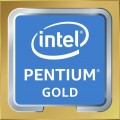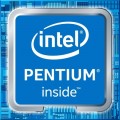Code name
This parameter characterizes, firstly, the technical process (see above), and secondly, some features of the internal structure of processors. A new (or at least updated) codename is introduced to the market with each new CPU generation; chips of the same architecture are "coevals", but may belong to different series (see above). At the same time, one generation can include both one and several code names.
Here are the most common Intel codenames today:
Cascade Lake-X (10th gen),
Comet Lake (10th gen),
Comet Lake Refresh (10th generation),
Rocket Lake (11th generation),
Alder Lake (12th generation),
Raptor Lake (13th generation),
Raptor Lake Refresh (14th generation).
For AMD, this list includes
Zen+ Picasso,
Zen2 Matisse,
Zen2 Renoir,
Zen3 Vermeer,
Zen3 Cezanne,
Zen4 Raphael,
Zen4 Phoenix and
Zen5 Granite Ridge.
Socket
The type of connector (socket) for installing the processor on the motherboard. For normal compatibility, it is necessary that the CPU and motherboard match the socket type; before buying one and the other, this point should be clarified separately
The following sockets are relevant for Intel processors today:
1150,
1155,
1356,
2011,
2011 v3,
2066,
1151,
1151 v2,
3647,
1200,
1700,
1851.
In turn, AMD processors are equipped with the following types of connectors: <
AM3/AM3+,
FM2/FM2+,
AM4,
AM5,
TR4/TRX4,
WRX8.
Clock speed
The number of cycles per second that the processor produces in its normal operating mode. A clock is a single electrical impulse used to process data and synchronize the processor with the rest of the computer system. Different operations may require fractions of a clock or several clocks, but anyway, the clock frequency is one of the main parameters characterizing the performance and speed of the processor — all other things being equal, a processor with a higher clock frequency will work faster and better cope with significant loads. At the same time, it should be taken into account that the actual performance of the chip is determined not only by the clock frequency, but also by a number of other characteristics — from the series and architecture (see the relevant paragraphs) to the number of cores and support for special instructions. So it makes sense to compare by clock frequency only chips with similar characteristics belonging to the same series and generation.
L1 cache
The amount of Level 1 (L1) cache provided by the processor.
Cache is an intermediate memory buffer into which the most frequently used data from RAM is written when the processor is running. This speeds up access to them and has a positive effect on system performance. The larger the cache, the more data can be stored in it for quick access and the higher the performance. Level 1 cache has the highest performance and the smallest volume — up to 128 KB. It is an integral part of any processor.
L2 cache
The amount of Level 2 (L2) cache provided by the processor.
Cache is an intermediate memory buffer into which the most frequently used data from RAM is written during processor operation. This speeds up access to them and has a positive effect on system performance. The larger the cache, the more data can be stored in it for quick access and the higher the performance. Level 2 cache volume can reach 12 MB, the vast majority of modern processors have such a cache.
L3 cache
The amount of cache level 3 (L3) provided in the processor.
Cache is an intermediate memory buffer into which the most frequently used data from RAM is written when the processor is running. This speeds up access to them and has a positive effect on system performance. The larger the cache, the more data can be stored in it for quick access and the higher the performance.
IGP
Model of the integrated video core installed in the processor. See "Integrated Graphics" for details on the core itself. And knowing the name of the graphics chip model, you can find its detailed characteristics and clarify the performance of the processor when working with video.
In terms of specific models, Intel processors use
HD Graphics, specifically
510,
530,
610,
630 and
UHD Graphics with models
610,
630,
730,
750,
770. AMD chips, in turn, can carry
Radeon Graphics,
Radeon R5 series,
Radeon R7 series, and
Radeon RX Vega graphics cards.
At the same time,
processors without a graphics core are appropriate for purchase if you plan to fully assemble a PC with a graphics card. In this case, overpaying for a
processor with a graphics core does not make sense.
TDP
The amount of heat generated by the processor during normal operation. This parameter determines the requirements for the cooling system necessary for the normal operation of the processor, therefore it is sometimes called TDP — thermal design power, literally “thermal (cooling) system power”. Simply put, if the processor has a heat dissipation of 60 W, it needs a cooling system that can remove at least this amount of heat. Accordingly, the lower the TDP, the lower the requirements for the cooling system.
Low TDP values(up to 50 W) are especially critical for PCs that do not have the ability to install powerful cooling systems — in particular, systems in compact cases where a powerful cooler simply does not fit.
Multiplier
The coefficient on the basis of which the value of the processor clock frequency is displayed. The latter is calculated by multiplying the multiplier by the system bus frequency (see System bus frequency). For example, with a system bus frequency of 533 MHz and a multiplier of 4, the processor clock speed will be approximately 2.1 GHz.

